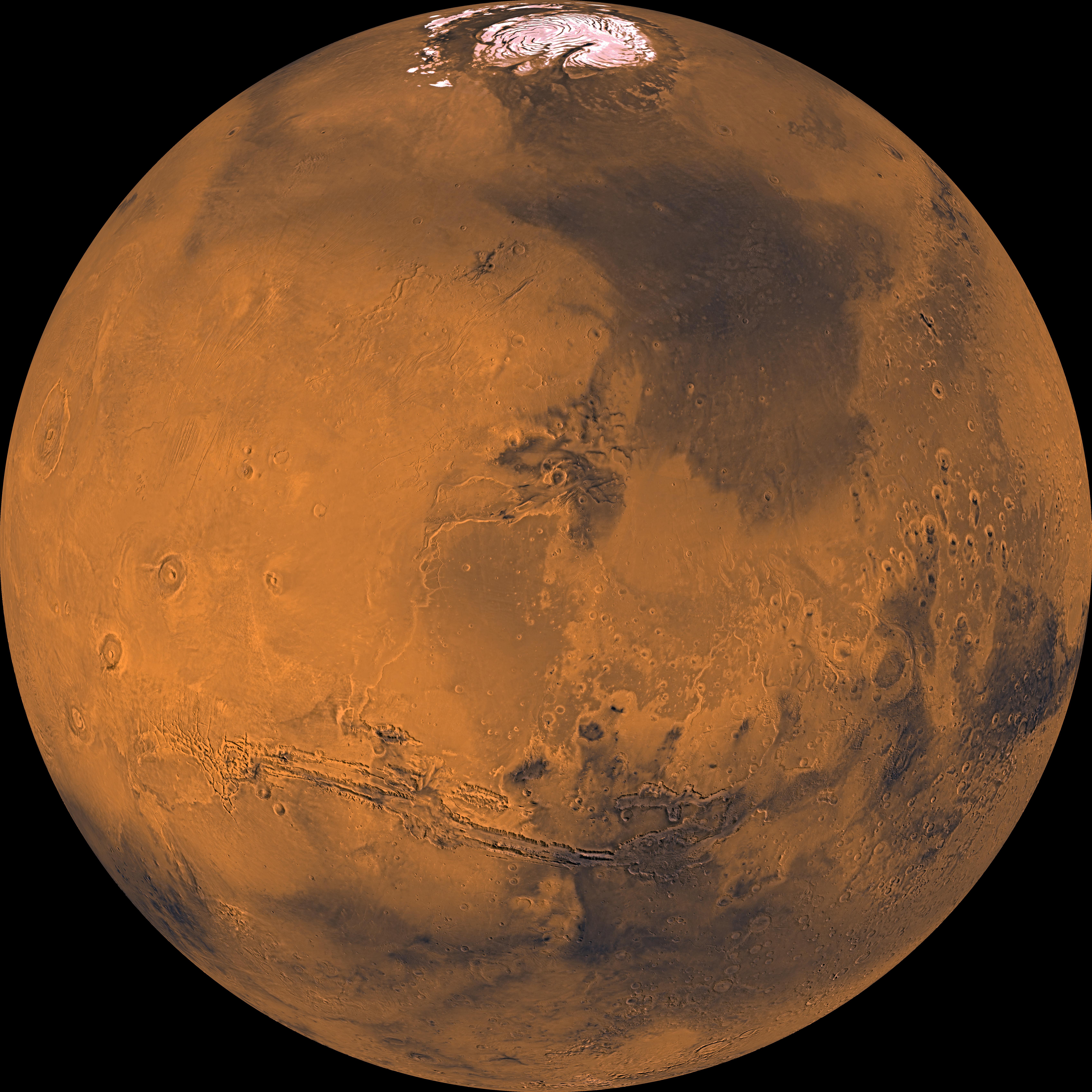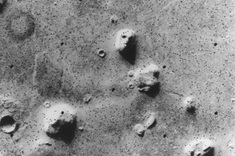
This detailed view of Mars was created using 1,000 photos taken by NASA’s Viking 1 orbiter.
Credit: NASA/JPL/USGS
The chances are good that microbial life existed on Mars long ago, and sending astronauts to the Red Planet is the best way to find the evidence, NASA’s chief scientist said.
Do you think life exists on Mars today?
Though Mars is cold and dry today, the planet hosted liquid water on its surface for extended periods more than 3 billion years ago, Ellen Stofan pointed out during a talk Tuesday (May 17) at the Humans to Mars Summit in Washington, D.C.
“Those conditions on Mars, we know, were not that different from the conditions on Earth from when life evolved,” she said. “And life evolved so quickly here on Earth, and in the oceans, that it gives the scientific community a fair amount of confidence that the same conditions did exist on Mars, and that life did evolve there. So how are we going to find it?” [The Search for Life on Mars (A Photo Timeline) ]
Scientists know that life had evolved on Earth by 3.8 billion years ago, and a recent study suggested that the first microbes actually might have appeared by 4.1 billion years ago — just 440 million years after the planet formed.
Earth life-forms stayed simple for a long time after that; complex, multicellular organisms didn’t get a firm foothold here until 800 million years ago or so. By that time, the Red Planet had long since lost most of its atmosphere, as well as its stable surface water. So the hunt for life on Mars should think small, Stofan said.
“We’re not looking for skeletons; we’re looking for fossil microbes — if [Mars] life did indeed go extinct,” she said. “And those are going to be hard to find.”
Indeed, field geologists here on Earth can study rocks rich in fossil microbes but never see the tiny structures, said Stofan, who is a geologist. Therefore, she thinks robots won’t be able to do the job by themselves on Mars, especially considering how high the burden of proof will be for such an epochal discovery.
“I strongly believe we will never settle this question of determining whether or not there’s life on Mars unless we get human scientists down onto the surface of the Red Planet,” Stofan said.

0 of 10 questions complete
The search for Mars life is, therefore, a strong motivation for putting boots on the Red Planet, which NASA aims to do by 2040. But there are other drivers as well, Stofan said.
“Every time I go out into a classroom — whether it was a D.C. high school I went to last week, elementary schools around the world — you ask those kids, ‘Do you want to go to Mars?’ And over half the room raises their hand,” she said. “So let’s get this done. Let’s go to Mars.”
Follow Mike Wall on Twitter @michaeldwall and Google+ . Follow us @Spacedotcom , Facebook or Google+ . Originally published on Space.com .


Comments are closed.